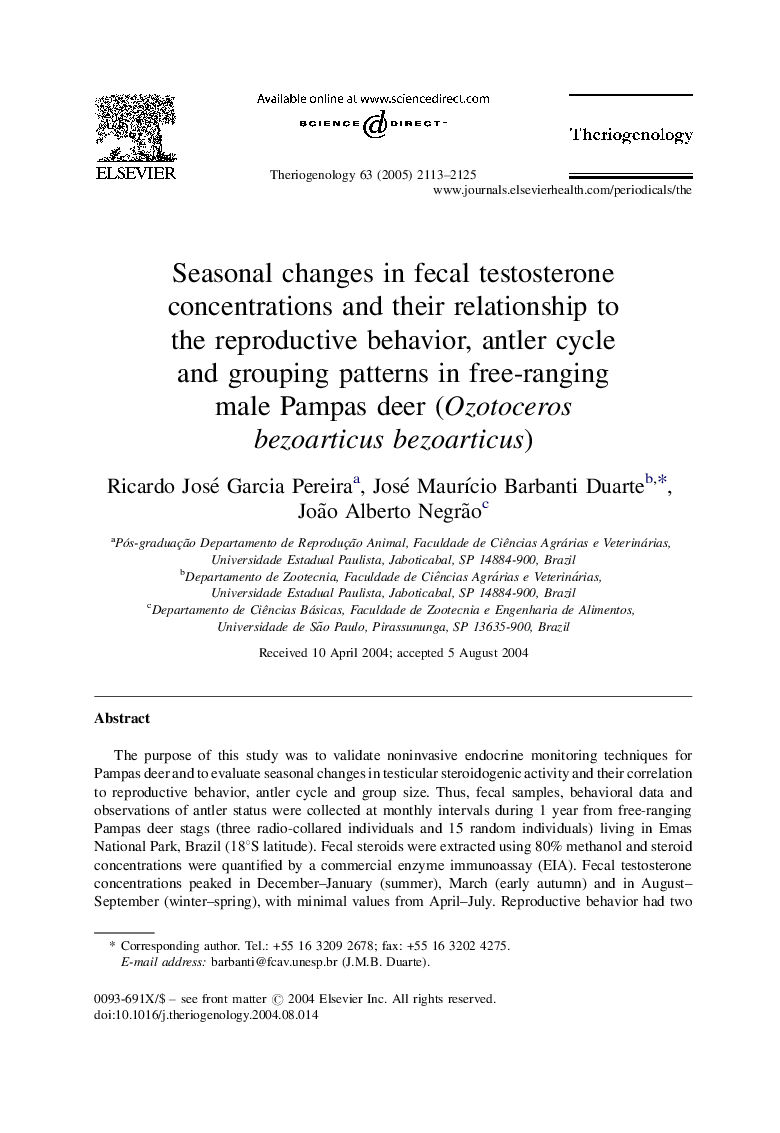| Article ID | Journal | Published Year | Pages | File Type |
|---|---|---|---|---|
| 2096989 | Theriogenology | 2005 | 13 Pages |
The purpose of this study was to validate noninvasive endocrine monitoring techniques for Pampas deer and to evaluate seasonal changes in testicular steroidogenic activity and their correlation to reproductive behavior, antler cycle and group size. Thus, fecal samples, behavioral data and observations of antler status were collected at monthly intervals during 1 year from free-ranging Pampas deer stags (three radio-collared individuals and 15 random individuals) living in Emas National Park, Brazil (18°S latitude). Fecal steroids were extracted using 80% methanol and steroid concentrations were quantified by a commercial enzyme immunoassay (EIA). Fecal testosterone concentrations peaked in December–January (summer), March (early autumn) and in August–September (winter–spring), with minimal values from April–July. Reproductive behavior had two peaks, the first in December–January, characterized by predominately anogenital sniffing, flehmen, urine sniffing, chasing and mounting behavior, and the second peak in July–September (behavior primarily related to gland marking). There were significant correlations between fecal testosterone and reproductive behavior (r = 0.490), and between fecal testosterone and antler phases (r = 0.239). Antler casting and regrowth occurred under low testosterone concentrations, whereas velvet shedding was associated with high concentrations of testosterone. We inferred that Pampas deer stags exhibited a seasonal cycle that modulated sexual behavior and the antler cycle, and we concluded that fecal steroid analysis was a practical and reliable non-invasive method for the evaluation of the endocrine status of free-ranging Pampas deer.
